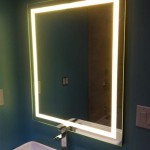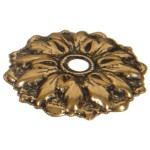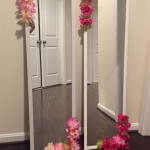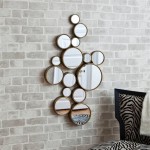Types of Antique Mirrors
Antique mirrors offer a glimpse into the past, reflecting not only images but also the artistry and craftsmanship of bygone eras. Their unique characteristics, from the subtle imperfections in the glass to the ornate detailing of their frames, imbue them with a charm and character that modern mirrors often lack. Understanding the different types of antique mirrors can be crucial for collectors, interior designers, and anyone appreciating historical decorative arts.
One of the earliest types of antique mirrors is the Venetian mirror. Developed in Venice during the 16th century, these mirrors were renowned for their exceptional clarity and reflective quality. Venetian artisans perfected the process of coating glass with a thin layer of tin and mercury amalgam, resulting in a highly reflective surface. These early mirrors were incredibly expensive due to the complex and secretive manufacturing process, making them luxury items reserved for the wealthy.
The distinctive feature of many Venetian mirrors is their beveled edges. The beveling process, which involves grinding and polishing the edges of the mirror at an angle, creates a decorative frame-like effect and enhances the play of light and reflection. Original Venetian mirrors are extremely rare and valuable, and collectors prize them for their historical significance and artistic beauty.
Following the Venetian tradition, other European countries began developing their own mirror-making techniques. French mirrors, particularly those from the 18th and 19th centuries, are highly sought after by collectors. These mirrors often feature elaborate frames crafted from gilded wood, ormolu (gilded bronze), or other luxurious materials. The styles of French antique mirrors range from the opulent Rococo and Baroque periods to the more restrained Neoclassical and Empire styles.
English antique mirrors also hold a prominent place in the world of antiques. During the 18th and 19th centuries, English craftsmen produced a wide variety of mirrors, often reflecting the prevailing furniture styles of the time, such as Georgian, Regency, and Victorian. Common frame materials included mahogany, walnut, and gesso, often embellished with intricate carvings, gilding, or inlay work.
Another significant category of antique mirrors is the convex mirror. These mirrors, with their outwardly curved reflecting surface, offer a wider field of view than flat mirrors. Historically, convex mirrors were often used in hallways and entryways to provide a panoramic view of the surroundings. They were also popular decorative elements, adding a touch of elegance and sophistication to interiors.
Convex mirrors often feature distinctive frames, ranging from simple wooden surrounds to elaborate gilt frames. The size of convex mirrors can vary considerably, from small hand-held mirrors to large wall-mounted pieces. Their unique reflective properties and decorative appeal make them a popular choice for antique collectors and interior designers.
Trumeau mirrors emerged as a popular style in the 18th century. These mirrors are typically incorporated into a larger piece of furniture, such as a chest of drawers or a console table. The mirror is often framed by decorative elements, such as pilasters, carvings, or painted panels. Trumeau mirrors add a touch of grandeur and elegance to a room, while also serving a practical purpose.
The term "chimney mirror" refers to a mirror designed to be hung above a fireplace mantel. These mirrors were particularly popular during the 18th and 19th centuries. Chimney mirrors often feature elaborate frames and can be quite large, serving as a focal point in a room. Their designs often complement the style of the fireplace and the surrounding décor.
Églomisé mirrors are characterized by a decorative technique that involves applying gold leaf or other metallic foils to the back of the glass. The design is then painted or etched onto the foil, creating a reverse painting effect. This technique, popularized in the 18th century, allows for intricate and delicate designs, adding a touch of luxury and artistry to the mirror.
Identifying the specific type of an antique mirror requires careful examination of various factors. The quality and type of glass, the style of the frame, the decorative techniques employed, and the overall construction of the mirror can offer clues to its age and origin. Consulting with antique experts and appraisers can provide valuable insights and authentication for significant pieces.
The condition of an antique mirror is a crucial factor in determining its value. Signs of age, such as minor foxing or tarnishing, can add to the character and authenticity of the piece. However, significant damage, such as cracks in the glass or extensive frame restoration, can detract from its value. Proper care and conservation are essential to preserve the integrity and beauty of antique mirrors for future generations.

Antique Mirrors A Guide To Identifying Collecting
Antique Mirrors A Buyers Guide Nimbus Antiques

An Introduction To Antique Mirrors Pioneer Glass
Antique Mirrors A Buyers Guide Nimbus Antiques

Antique Mirrors A Short History Georgian Antiques

Rococo Mantle Mirror Carved Gilt Frame

Types And Styles Of Antique Mirrors

Antique Mirrors A Guide To Identifying Collecting

The Ultimate Antique Mirror Guide

Common Types And Styles Of Antique Mirrors Lovetoknow








